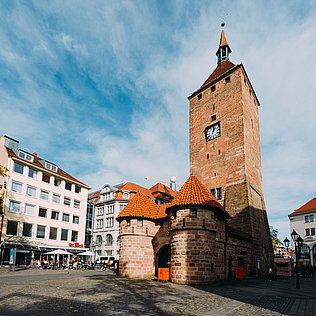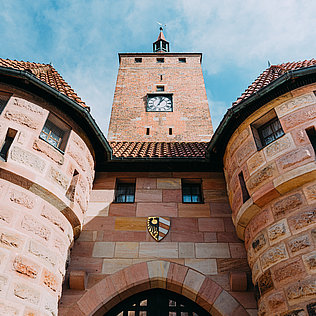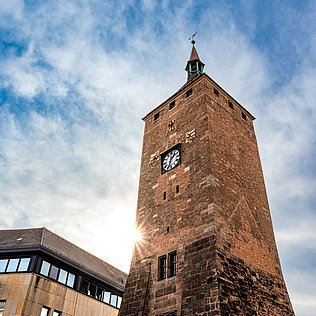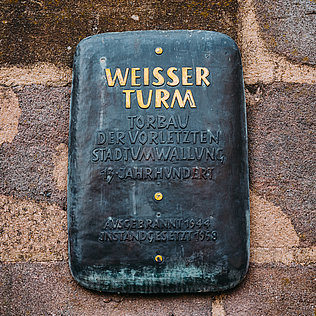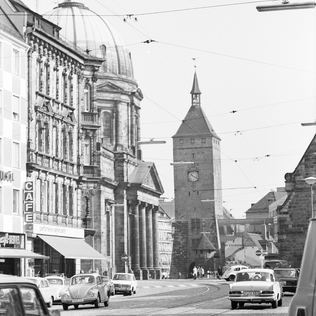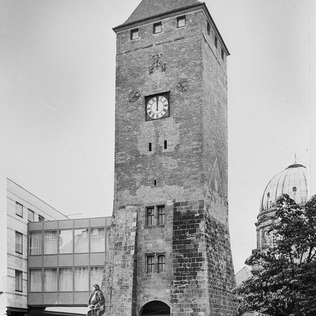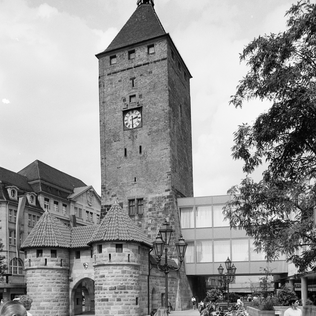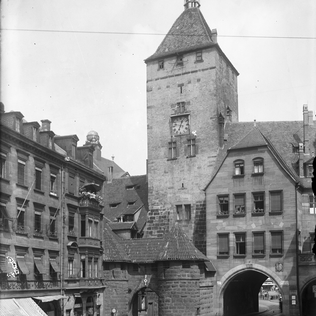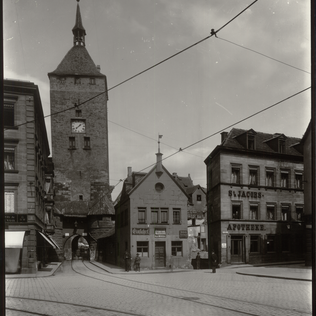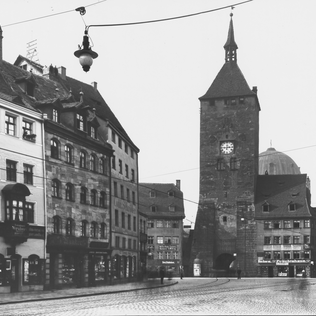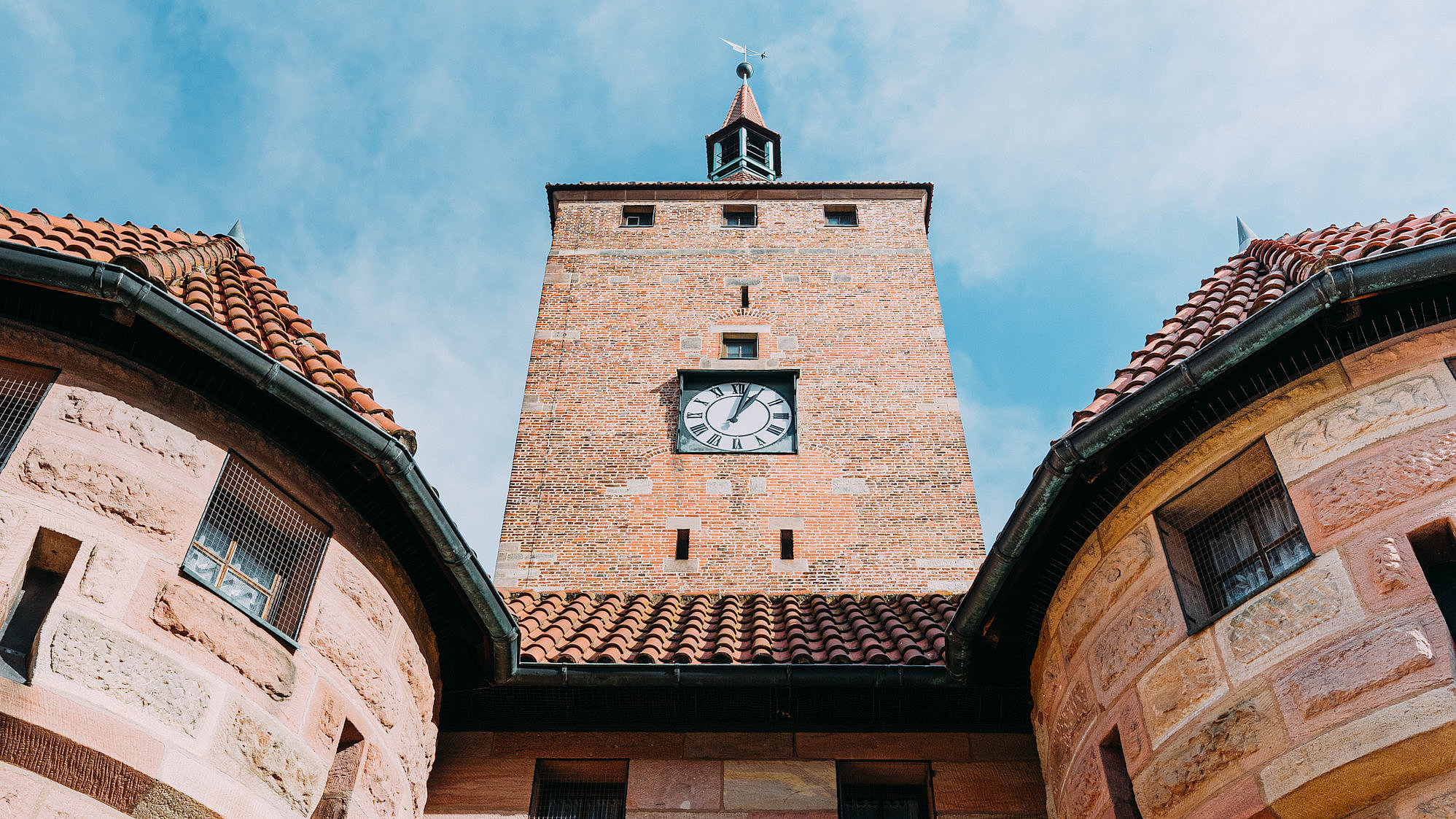
Weißer Turm
... that isn't white
The Weißer Turm (White Tower) stands in the middle of the pedestrian zone – but wait a minute, why isn’t it white?! And if not, then why this name? Actually, it was once white, because it was covered in whitewash.
The Weißer Turm is one of the Nuremberg belltowers. When Nuremberg was a Free Imperial City, time was signaled by ringing bells. Private homes had no clocks and the “Nuremberg Egg” (one of the first pocket watches) wasn’t invented yet. Around 1400, the city had four bell towers: The Weißer Turm, the Laufertor Tower and a tower each from St. Sebald and St. Lawrence.
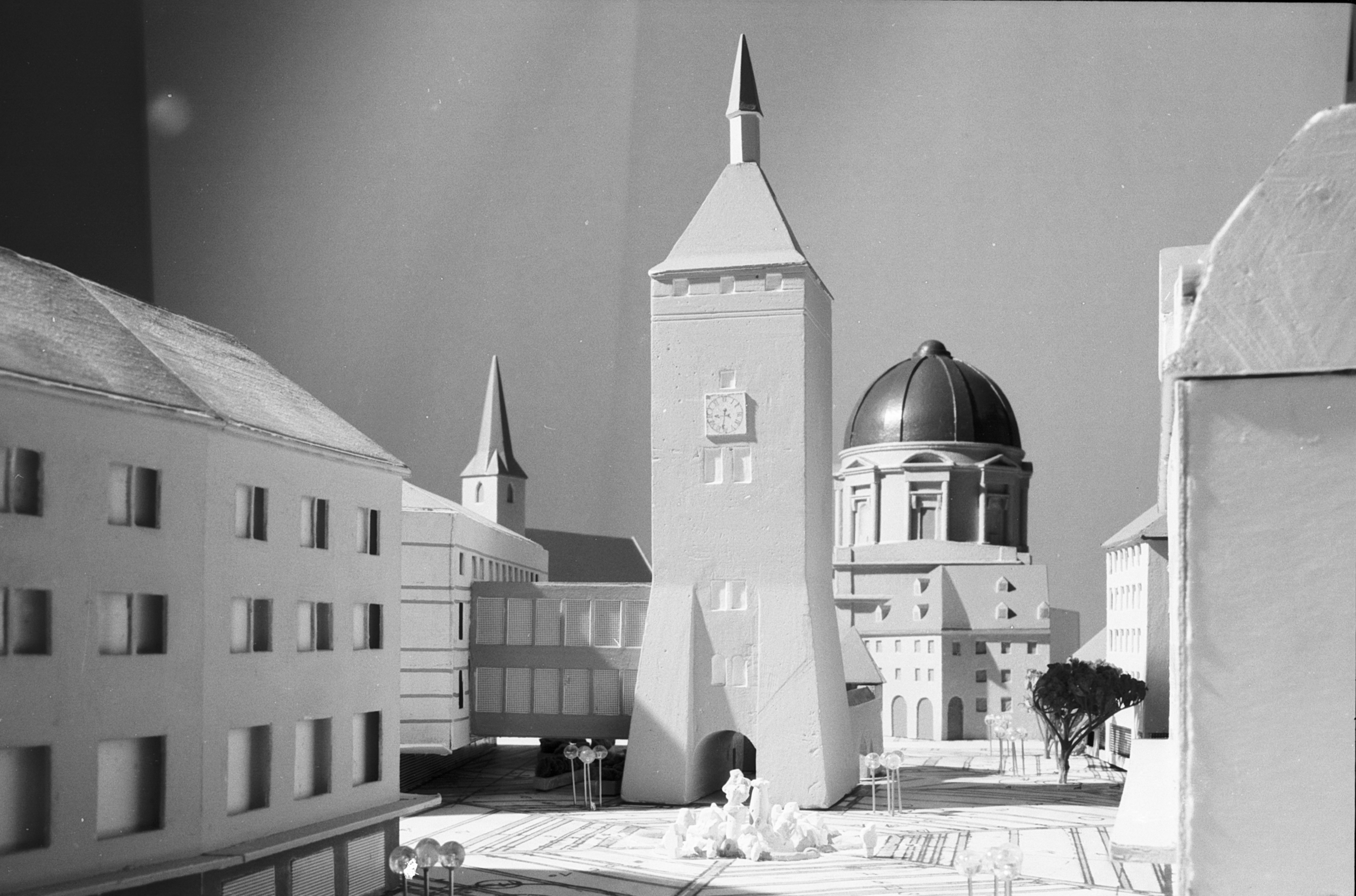
The tower, which is today free standing, was once part of a previous city wall made of stone in the 14th century and was part of the inner Spittler Gate (named after the nearby Elisabethspital). It is made of bricks and sandstone and originally had a gate with a pointed arch. It was built around 1250 and served at that time as a customs collection site.
The tower stands opposite of the church of the Teutonic Order. It closes the pedestrian zone at its western end. Since the underground was built in the 1970s, the gate is the entry way to the station “Weißer Turm”. Below ground, you can access U1-Fashion in the Wöhrl Clothing Store and C&A. The construction of the underground is the reason that the Marriage Carousel was placed directly in front of the Weißer Turm!
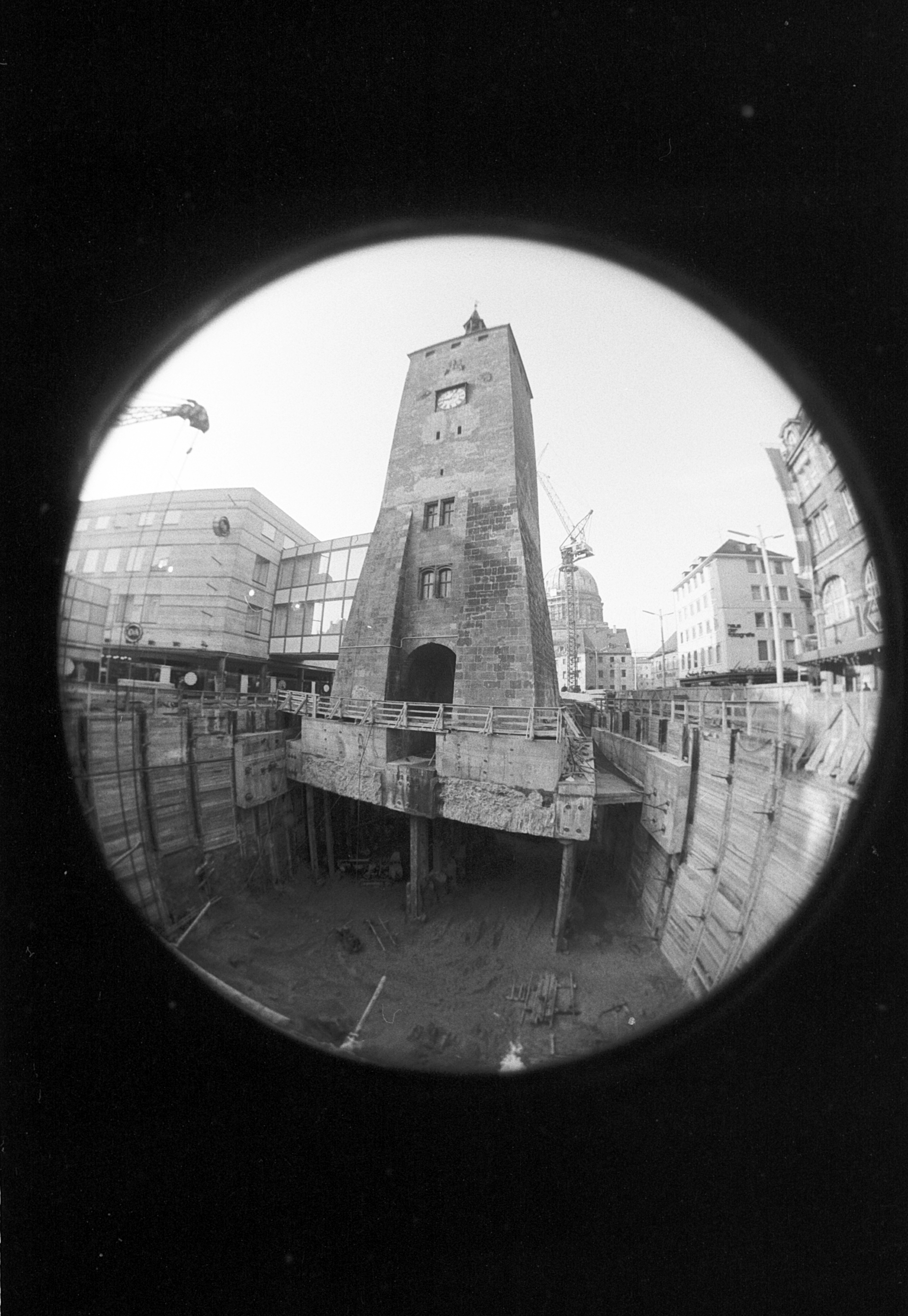
Categories at St. James's Quarter
The Hexenhäusle
